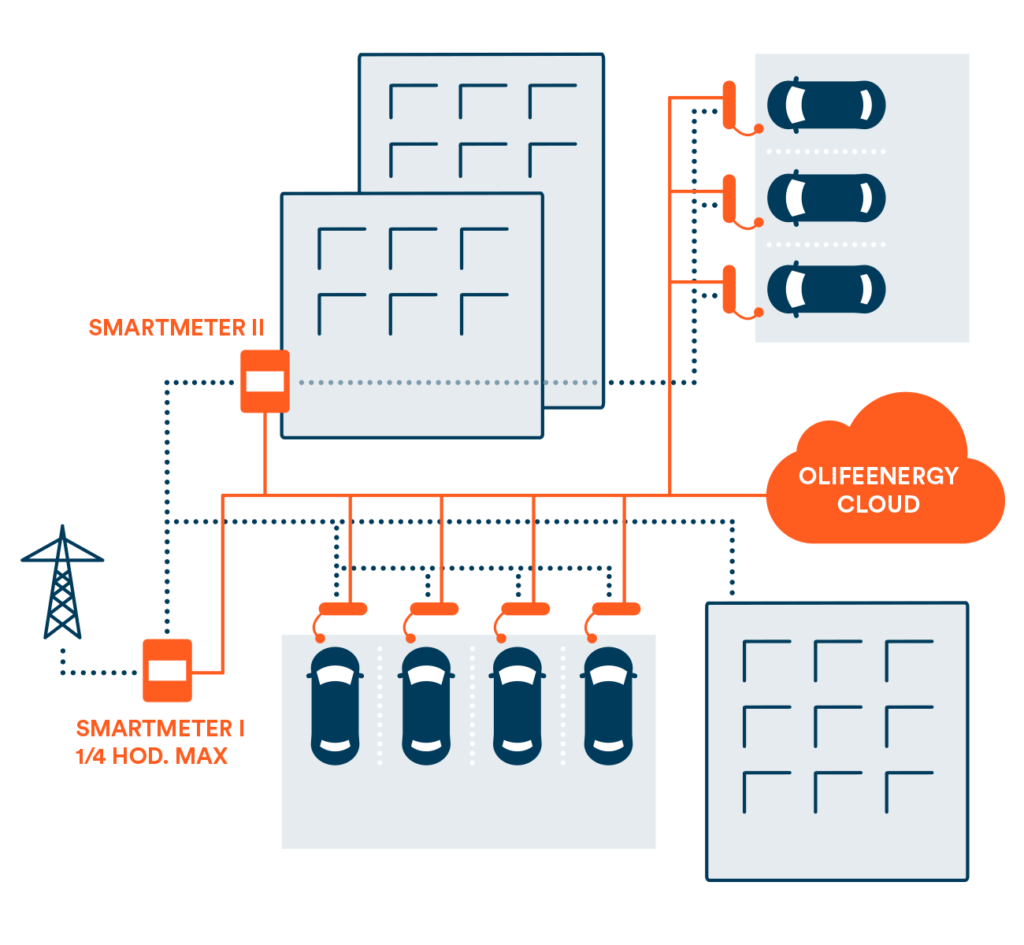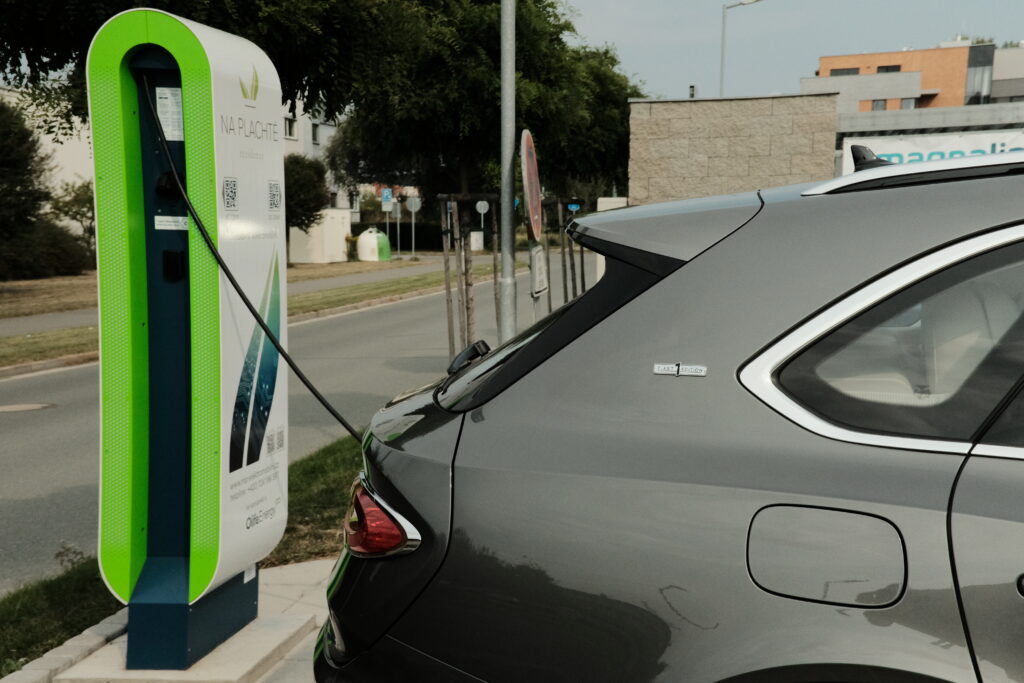Installing individual chargers is one thing. Building a complex smart charging system that can supply a large apartment complex and is ready to expand, is whole different challenge. Let’s take a look at what we did with our latest installation at the Residence Na Plachtě in Hradec Králové, Czechia.
In an ideal world, building a residential project with enough capacities for charging would be easy. You would just ask the power company for whatever output you need for all your charging points combined, and you would get it. Then, you would just install the chargers and let drivers happily juice up their cars.
Unfortunately, the world doesn’t always work in the way we want. The power grid has its limits and the allocations of power output are often lower than ideal. Increasing them (if possible at all) costs money both up front and on raised monthly payments. Fortunately, our smart charging system has ways to work around this problem, as we can illustrate on one of our latest installations, the Residence Na Plachtě in Hradec Králové.
In its initial phase, this project includes one DoubleBox in the parking garages of each of the two apartment blocks, and one DC Charger outside the apartments. The DC Charger is also available for public charging, unlike the DoubleBoxes.
This may sound relatively humble, but the system is designed to be easily expanded with more chargers, without any modifications of the equipment already installed. As the number of electric cars will increase, the capacities for charging them can increase as well.

Managing the energy flow
In installations like this, there are two main goals that our smart system has to achieve. First, at the low-voltage level, need to prevent the circuit breakers from being tripped. Let’s take a look at how our system prevents this.
Ideally, the whole system would designed so that all the charging points would be able to run at the maximum power even with all the appliances – from electric kettles and stoves to heaters and AC units – being switched on. However, this would require a huge power allocation from the grid, something that’s not always possible, especially not in city centres where the grid is already strained. This means that without a smart management in place, the combination of cars being charged and appliances switched on could easily trip the circuit breaker.
To prevent this, our system measures the energy consumption of each of the buildings (in this case, each apartment block) and if the overall energy consumption approaches the limit, it reduces the power of the charging points, keeping the whole installation under its maximum permitted current. Therefore, the charging points can run at maximum possible speed in the off-peak hours and share the reserved amperage in the times when people use their appliances.
Staying within the reserved capacity
The other problem concerns the high-voltage energy management and the reserved capacity in the power grid. Large installations, like the Residence Na Plachtě, have their own transformer stations, buying the energy from the high-voltage grid. This energy is sold based on the yearly and monthly reserved capacity (YRC and MRC[VD1] ). Unlike the circuit-breaker size, this capacity is not constant and can be, for example, negotiated differently for different seasons – for example setting is higher during summer months to account for the AC energy consumption.
This reserved capacity is measured in 15-minute blocks, during which the negotiated capacity, counted in kilowatt-hours (kWh), must not be exceeded. OlifeEnergy’s smart energy management system has the unique capability of keeping track of this and reducing the charging power when needed to stay within the limits.
For example, if your reserved capacity is 20 kWh per 15 minutes, it may be plenty enough to run a home and charge one car. However, when you plug-in the second car, the system may find out that you’ve already used 18 kWhs in the first 10 minutes of those 15, which would mean that you would overshoot your limit in the remaining five. To prevent that from happening, the system slows down or even stops charging, and then resumes in the next 15-minute block.

How it all works together?
Sounds complicated? It is, but an example may make it much easier to understand. A typical 16-apartment block may have a 150 A circuit-breaker, which is enough for charging several EVs off-peak. However, when tenants come home in the evening, they turn on their appliances and just the apartments may take more than half of the available amperage – say, 80 A.
Then, you get one Nissan Leaf with optional 32 A charger come home and start charging. Suddenly, you’re running 112 A on the 150 A circuit. Still fine, but when the neighbour with another Leaf comes home as well, the system is nearing its limit. When the next car, say, BMW i3, returns, the system registers the problem and immediately slows down all three charging points. This way, it avoids the block from blacking out, while allowing all the cars to still be charged, even though at slower speed.
If, at the same time, a Tesla plug into the public DC Charger outside, the system may even slow that, so that the whole complex doesn’t go over its reserved capacity, which would result in breach of contract conditions and subsequent fine being charged. When the tenants start going to sleep and their appliances get switched off, the chargers return to the highest possible charging speed to make the most of the off-peak time.
This way, the EV owners have their cars fully charged and ready in the morning at best possible price, while the developer or apartment block proprietor doesn’t need to pay for excessively large reserved capacity. Or wait for the capacity to be available, which it often isn’t, especially in large city centres.

